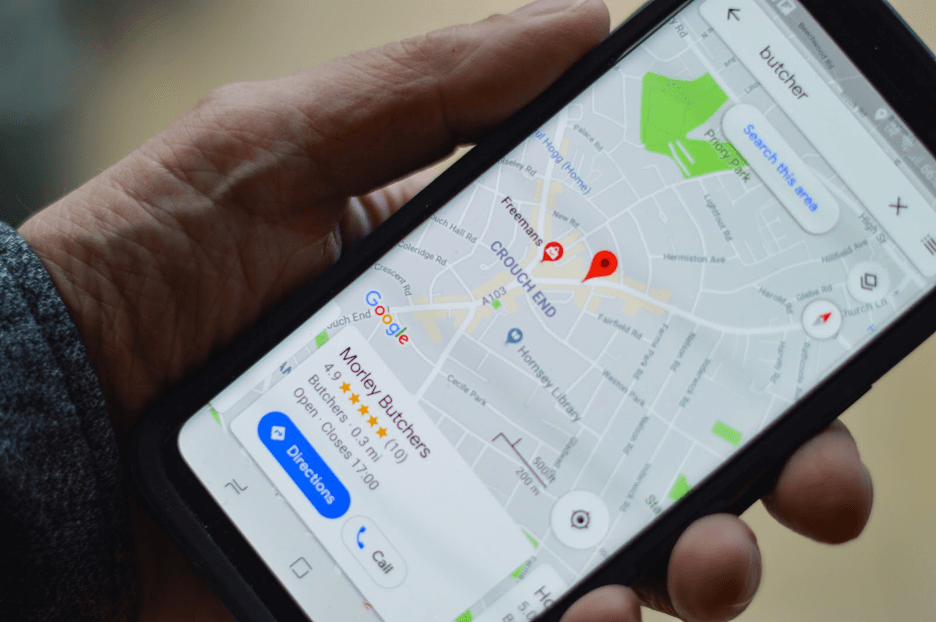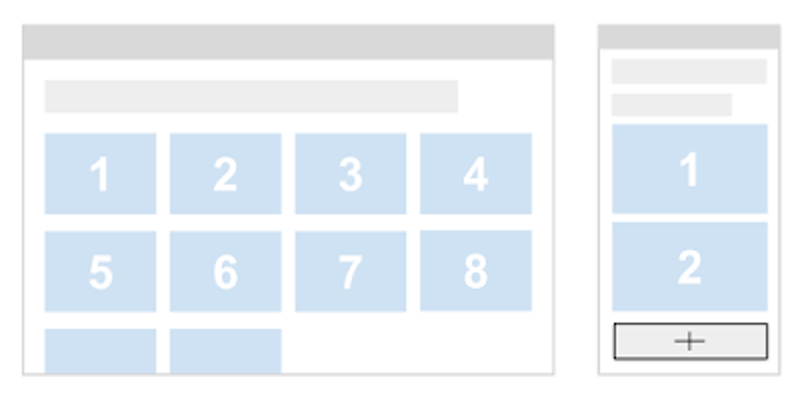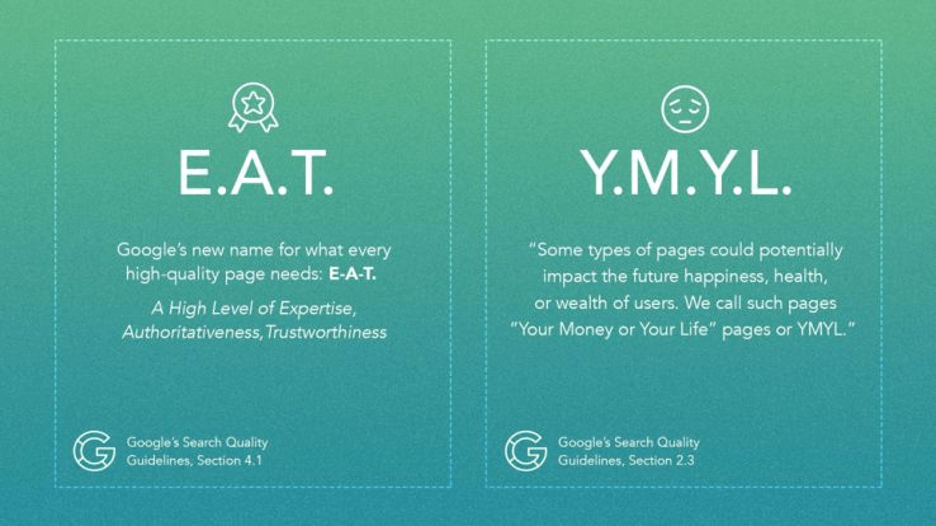Much has changed in the world of digital marketing in the past few years. We’ve seen the rise of automated bidding. We’ve seen an increased emphasis on data privacy and transparency on behalf of the major platforms. We’ve seen new ad formats, the rise of voice search and video marketing, and much more.
One thing that hasn’t changed? Search engine optimization (SEO) is still one of the most cost-effective, scalable ways to grow a business.

Rumors of SEO’s demise have been greatly exaggerated; and in fact, more and more small businesses are adopting SEO as a digital marketing channel in the wake of revenue reductions and tighter ad budgets.
That’s poised to continue in 2021. Let’s talk through the top five SEO trends for 2021, discuss why they’re important, and how you can make sure you’re using them to your advantage in organic search.
SEO Trend #1: A mobile-first mentality is becoming mandatory.
Seventy percent of sites have already equipped themselves for mobile-first indexing. Google has been working on mobile-first indexing — prioritizing the crawling of the mobile versions of websites using their mobile smartphone user-agent — for a few years. The change was originally supposed to take place this September. To give businesses a little extra time to prepare, they moved that date back to March of 2021.

Google recommends prioritizing lazy loading on mobile for their new mobile-first index.
As we’ve mentioned, Google has found in their research that 70% of sites are already fairly well-equipped for mobile-first indexing. That said, now is a good time to take a look at how your site performs and indexes on mobile. Here are a few of the pointers Google gives business owners to prepare for mobile-first indexing:
- Robots meta tags. Use the same robots meta tags on the mobile version of your site as those on the desktop version.
- Lazy-loading on mobile. Utilize lazy-loading on mobile to help with page speed. Make sure you follow Google’s lazy-loading best practices.
- Be aware of what you block. Some resources have different URLs on the mobile version than those on the desktop version. If you want Google to crawl your URLs, make sure you’re not disallowing crawling of them with your robots.txt file.
- Fix content distribution on mobile. If your mobile version has less content than your desktop version, update your mobile version so that its primary content (the content you want to rank with) is equivalent.
- Images and videos. Make sure the images and videos on your mobile version follow image best practices and video best practices.
Take care of the above items, and you’ll be in good shape when mobile-first indexing ultimately rolls out.
SEO Trend #2: Google’s understanding of page experience has evolved. Yours should too.
Google released a new set of metrics, known as Core Web Vitals, back in May 2020. You can think of Core Web Vitals as baseline requirements for a site’s technical health; indicators Google uses to evaluate the UX (user experience) of a page. Google defines Core Web Vitals as follows:
“A set of real-world, user-centered metrics that quantify key aspects of the user experience. [Core Web Vitals] measure dimensions of web usability such as load time, interactivity, and the stability of content as it loads (so you don’t accidentally tap that button when it shifts under your finger — how annoying!).”
There are three Core Web Vitals that, together, measure three different aspects of UX: loading speed, interactivity, and visual stability.

Here’s how Google defines them:
- Largest Contentful Paint (loading): Measures perceived load speed and marks the point in the page load timeline when the page’s main content has likely loaded.
- First Input Delay (interactivity): Measures responsiveness and quantifies the experience users feel when trying to first interact with the page.
- Cumulative Layout Shift (stability): Measures visual stability and quantifies the amount of unexpected layout shift of visible page content.
What does this have to do with SEO? Well, Google combined the three Core Web Vitals with its existing signals for page experience (mobile-friendliness, safe-browsing, HTTPS-security, and intrusive interstitial guidelines) to create a core algorithm update known as the Page Experience Update.

When the Page Experience Update fully rolls out in May of 2021, you can bet that what ranks on search results will change based upon which sites meet Google’s requirements for a healthy user experience.
How do you know if your site has healthy Core Web Vitals? First, you can run any page on your site through PageSpeed Insights reports to determine whether or not its Core Web Vitals are up to par.

You can also take a peek in the new Core Web Vitals report in Search Console to understand just how many pages on your site are “good,” how many are “poor,” and how many “need improvement.”
Google has itself said that page experience does not override having great, relevant content; so by all means, continue to prioritize having strong content. But it’s important to make sure your site is as technically healthy as possible prior to the Page Experience Update hitting the search results in May.
SEO Trend #3: Content continues to reign king. Now and always.
Speaking of great content; just how important is it to great SEO? The most important. Don’t take it from us. Take it from Google:

So much has changed about SEO over the years. Each algorithm update has a different flavor. Recently, we’ve had BERT, which leveraged machine learning to improve Google’s understanding of natural language in content. We’ve had the Site Diversity update, which sought to improve situations where a search term returned 3-5 results from the same site. We’ve had the Mobile Speed Update, which made page speed a ranking factor for mobile results.
Throughout all of these updates, Google’s stance has not changed: great, relevant content has always been, and will always be, the most important determiner of a page’s ability to rank in organic search.

It’s not just Google’s Danny Sullivan who has espoused that sentiment. We’ve seen it in countless blog posts, conferences, forums, comment sections — just about anywhere SEO experts take to vent their anxiety about algorithm updates and changes to the search results.
Great content is your trump card. With regard to the algorithm, you can bet that Google will update it every few days in 2021. You can bet that there will be chatter in the organic search community about which verticals are impacted and why. You can bet that the search results will change and that Google will “officially announce” and even “name” a few of these updates.
Fortunately, if you have strong content, you can also rely on that being the most vital protector against traffic decreases in 2021. Continue to focus on creating content that moves, educates, and is useful for your audience, and you’ll be in good shape this year.
SEO Trend #4: Local SEO continues to rise.
Searches for “local seo” saw a definitive increase when the pandemic took hold in 2020. That trend continued throughout the year and didn’t plateau until about mid-Fall.

What was behind the increase? Brick-and-mortar businesses had less revenue, less ad spend to work with, and less foot traffic. Businesses who had never understood the importance of Google My Business optimization were updating their hours, optimizing for local keywords, and implementing structured data in an attempt to optimize for local listings and capture vital local traffic.
As brick-and-mortar shopping rebounds in 2021, look for businesses to continue to understand the importance of local SEO while leveraging it more for growth than mere survival. Along with Google My Business optimization, tactics like structured data implementation, local keyword optimization, store locators, and citation management will all continue to drive results for local businesses.
SEO Trend #5: Users will continue to EAT up credible content.
SEO trend #5 was a toss-up between EAT and voice search. Voice search hasn’t really taken off like many experts predicted it would; and while we’re not ruling out growth in 2021, we know for certain Google will continue to look favorably upon content that demonstrates EAT (expertise, authoritativeness, and trustworthiness) in the search results.

Google released EAT as part of its Google’s Search Quality Rater Guidelines — a 168-page document used by human quality raters to assess the quality of Google’s search results.
Here’s what it said about each element:
Expertise
Is the content creator an expert on the topic? Does he have credentials that demonstrate that fact?
Per Google, “The standard for expertise depends on the topic of the page.” This is especially important for what’s known as YMYL (Your Money or Your Life) subject matter — content that, if presented inaccurately or untruthfully, could directly impact the reader’s happiness, health, safety, or financial stability.

Authoritativeness
This one comes down to, quite simply, backlinks. Receiving inbound links from other reputable sites is the surest way to show Google that your content is authoritative.
Leverage data-backed studies, comprehensive infographics, and in-depth guides that folks across the internet will feel compelled to share with their audiences. Do that, and you’ll equip yourselves with the kind of signals for authority that Google will look favorably upon.
When in doubt, you can use a tool like Moz or Ahrefs to measure authority on a page-specific and site-wide level. You can also talk to your SEO agency to make sure that this is a focus for your website content.
Trustworthiness
Does your business have mostly positive reviews across sites like Google My Business, Tripadvisor, Facebook, and Yelp? Are you engaged with customers when they have a poor experience, and do you solicit and monitor reviews on a regular basis?
If so, you’re setting yourself up to have strong signals for trustworthiness. Some other methods for increasing trustworthiness: having a clear privacy policy/T&C statement that’s linked to in your footer, having a clear refund and returns policy, and setting up your authors with credible biographies that link out to other trustworthy sites.
Paying attention to SEO trends to increase organic search traffic in 2021.
SEO is always changing. It will continue to change this year. Understanding and acting on the trends mentioned in this post is a huge step — you’ll be setting your business up to see healthy organic traffic growth in 2021.
And if you want a little help taking action on important SEO trends for this year, don’t hesitate to see how LOCALiQ can help your business get more organic search traffic in 2021.






